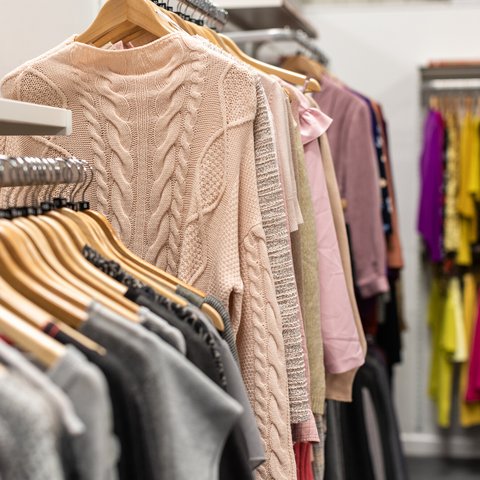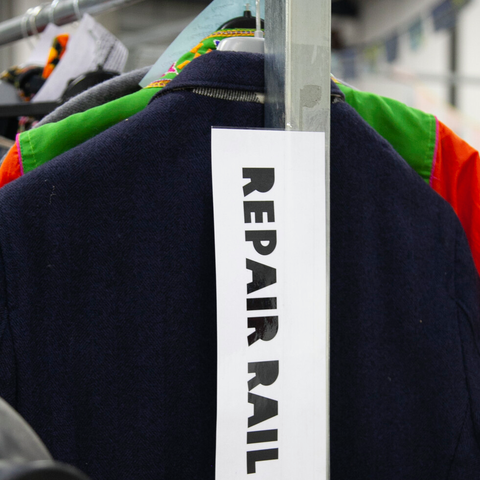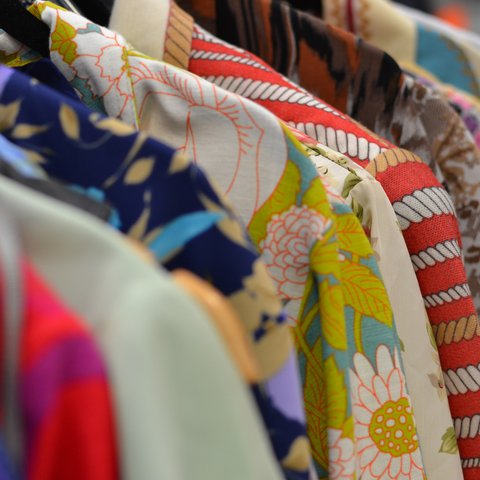What is slow fashion?
Slow fashion is about fashion that has a more positive impact on the planet and on garment workers.
Discover the slow fashion movement!
What is slow fashion?
Slow fashion is the opposite of fast fashion. It takes an ethical and sustainable approach to producing clothes.
The slow fashion movement is a direct response to the harmful impact of fast fashion on the environment and garment workers. It advocates for making fashion choices that are kinder to people and planet.
Oxfam wants to change the way the fashion industry works. We need a system that works for everyone – consumers, producers and the planet.
How did the slow fashion movement begin?
The slow fashion movement started as a response to the fast fashion industry.
Fast fashion refers to the rapid and low-cost production of trendy clothing from mass-market retailers. It targets consumers who seek the latest fashion trends. But is extremely harmful to the environment.
According to the UN Environment Programme, the pollution, waste, and emissions of fast fashion are fuelling the triple planetary crisis – climate, nature, and pollution.
The slow fashion movement encourages people to consider their clothing purchases and the impact they have on the world.
The movement has grown in popularity in recent years, with many people choosing to buy second hand and support independent designers and brands that are committed to sustainability and ethical practices.
Fast fashion’s impact on workers and the environment
Gender and economic inequality are prevalent throughout the fashion value chain.
While some fashion brands are making strides to improve conditions, many have workers in their supply chains who are paid below a living wage based in countries where workers don’t have adequate access to join unions, paid leave and other employment rights.
Workers are often women and, in some cases, children. This exacerbates inequality and keeps people trapped in poverty.
The increasing demand for fashion leads to inhumane working conditions for millions of garment workers, including low wages and unsafe workplaces.
The industry's focus on cheap and trendy clothing often ignores their hard work, and global fashion brands prioritise profits over worker wellbeing.
In the 2019 Tailored Wages report, 85% of fashion brands surveyed pledged to pay workers at least enough to support their basic needs, but none did so in countries where the most clothing is produced. This unfair treatment and poor pay perpetuate the cycle of poverty, making it difficult for garment workers to escape economic hardship.
What’s more, fast fashion reinforces existing power imbalances by sustaining gender and racial discrimination. Many garment workers are people of colour, with over 85% being women of colour who work under appalling conditions. This is all driven by a system that exploits traditional ideas of what a woman can and cannot do. And the fashion industry still reflects its colonial roots with the extraction of resources and the exploitation of labour from people of the Global South. The industry urgently needs to change.
What is Oxfam doing?
Oxfam is a founding member of the Ethical Trading Initiative, who work together to improve human rights in global supply chains.
We also promote more sustainable and circular approaches to clothing in the UK fashion and textile industry, such as the Textiles 2030 initiative and through campaigns like Oxfam's Second Hand September.
Slow fashion brands
Slow fashion brands prioritise classic, timeless styles over short-lived trends.
Where fast fashion encourages shoppers to buy as frequently as possible through trendy styles and low prices, slow fashion brands encourage shoppers to only buy what they really need.
By creating high quality collections that won’t go out of trend, slow fashion brands are able to reduce textile waste in our landfills. The goal is lessening the fashion industry's impact on our climate.
What do slow fashion brands do?
Slow fashion brands that sell new clothes make clothes from strong and durable, lower-impact materials like linen.
These slow clothes are capsule wardrobe-ready rather than made to follow fast fashion trends. They never go out of style!
You can find second hand clothes that help extend the life of garments in charity shops like the Oxfam shops and online shop. When you do buy new, you may find slow fashion clothes in small boutiques or market stalls from local makers who use sustainable fabrics.
When you buy custom made clothes it also saves on mass production techniques
Oxfam's own products come from accountable suppliers who put people and planet before profit. Whether that’s through championing Fairtrade, caring for our planet, or creating fair employment for the people behind the products.
How you can make a difference
There are many ways you can make a difference in the slow fashion movement.
As a consumer, participating is more than choosing to shop with ethical brands. Mindful consumption helps you to only buy what you really need. By avoiding the temptation of trends and choosing high-quality garments, you will have a wardrobe of clothing that will last a long time.
Capsule Wardrobe
Have you ever felt like you have nothing to wear when you in fact have a wardrobe overflowing with clothes?
Maybe it’s time to stop shopping for trends, and start shopping for a capsule wardrobe. Having a capsule wardrobe means you have a small number of timeless, well-fitting clothes that can easily mix and match to create many different outfits.
Here are some slow fashion tips...
Second-hand over new
By choosing to shop second-hand, you are helping to reduce the demand for production of new clothes. This in turn reduces harm to our planet, which is key to participating in slow fashion. Many fashion lovers will agree that vintage clothing can be some of the best quality you can find at an affordable price.
“I’m actually against wearing fashion for fashion’s sake. I think it’s much more interesting to put together looks from vintage," said British Costume Designer Sandy Powell at the Fashion Fighting Poverty 2023 show.
Donate what you don’t wear
You can adopt a circular approach to fashion by donating your old clothes and accessories to Oxfam. This gives your unworn garments a longer life while raising money for Oxfam’s work fighting poverty. You can donate to your local Oxfam shop or via post for free.
Quality over quantity
In the age of fast fashion, finding high quality clothing can be a challenge. Knowing how to spot cheaply made garments is key to finding clothes that will last. For example, you should avoid anything made from mostly synthetic fabrics and check for good stitching work.
Take care of what you have
Knowing how to extend the life of your clothing will reduce textile waste and the need for production. From learning simple sewing skills to reducing how often you wash, you can extend the life of all of your clothes. Check out our best hacks for making your clothes last longer.
Bonus slow fashion tips
- Reuse clothes you already own instead of buying new
- Do clothes swaps or regifting clothes
- Shop with brands that have a genuine sustainability policy
- Take part in Oxfam’s Second Hand September!
References
- https://www.ethicaltrade.org/about-eti/our-members
- https://www.oxfam.org.uk/documents/541/RS1010_Oxfam_Womens_Work_Document_A4_Landscape_FINAL.pdf
- https://international-partnerships.ec.europa.eu/news-and-events/stories/are-clothes-you-are-wearing-free-child-labour_en
- https://www.wiego.org/garment-workers https://www.ilo.org/wcmsp5/groups/public/---ed_dialogue/---sector/documents/publication/wcms_669355.pdf
- Garments are the second highest at-risk product for modern slavery https://issuu.com/fashionrevolution/docs/fashionrevolution_impactreport_2019_highres (page 8-9)
- Naughty or Nice 2022 | Oxfam Australia
More posts like this

– What’s the difference between ethical and sustainable fashion, and how are they linked?

– Find out more about the human and environmental impacts of clothing production.

– We've made this guide to sustainable, eco-friendly shopping online just for you. Read our tips and recommendations on shopping sustainably.
